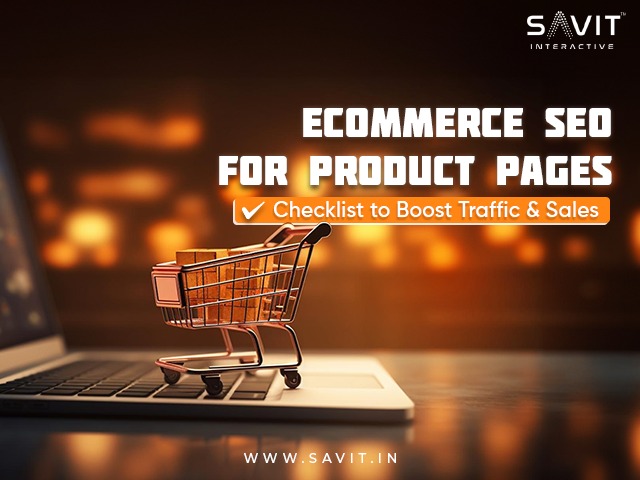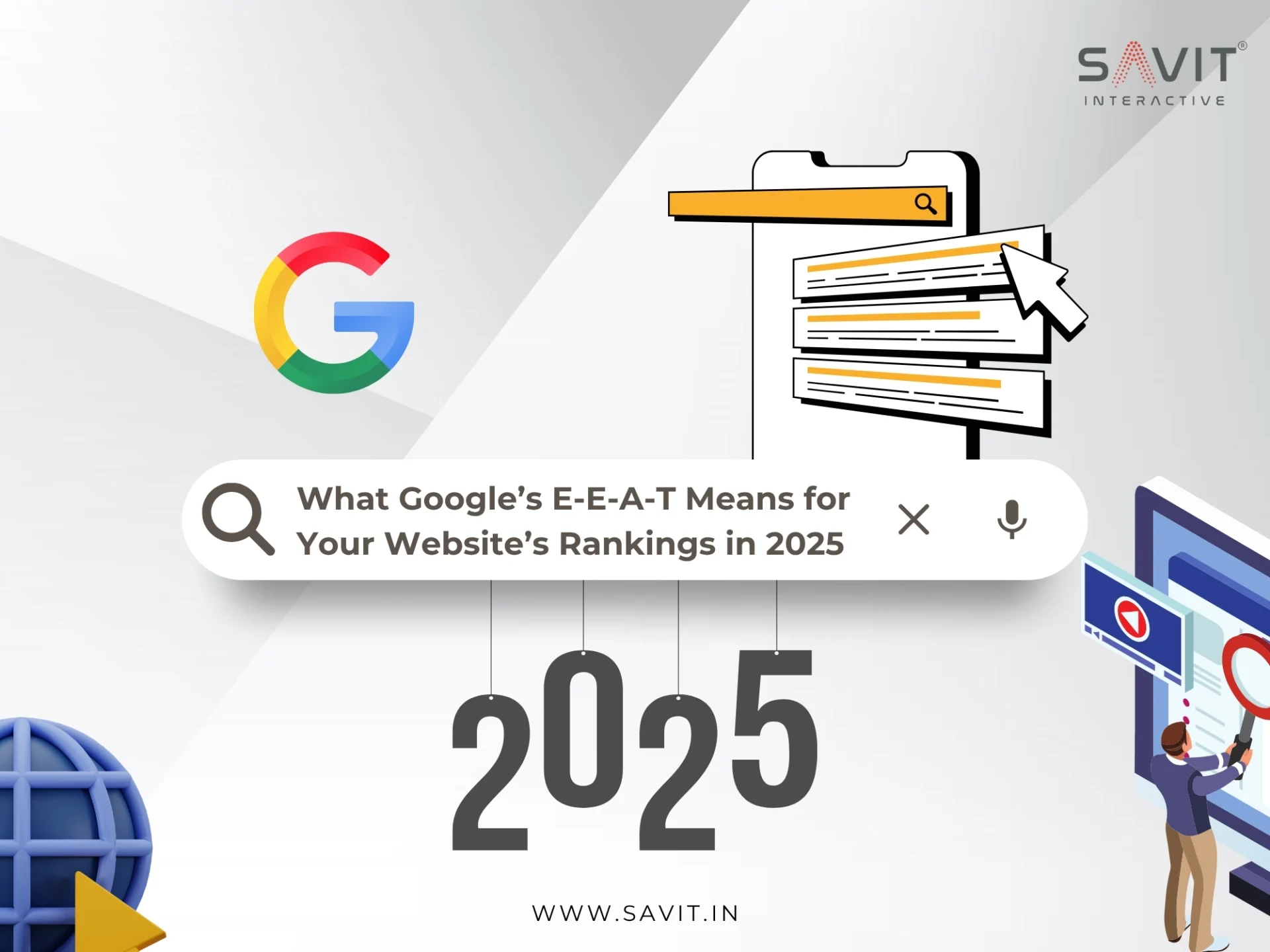53% of customers look up things online before making a purchase. To make the greatest decision possible, 53% of consumers said they always conduct research before making a purchase. However, you might be shocked at how many marketers and owners of online stores (maybe except Amazon!) fail to optimize their product pages. Occasionally, this disregard even to the point of duplicating and pasting the same product descriptions that the manufacturer provides. A significant opportunity is lost when you don’t give your product pages enough thought and make sure they complement your SEO plan.
Learn how to use a straightforward ecommerce SEO strategy for your product pages by reading on, and then watch as your traffic and sales soar!
Why is product SEO important?
For e-commerce websites, SEO is crucial since it increases traffic and boosts sales. More customers see your products when your online store ranks higher in search results. Over time, this results in increased sales. That is all there is to product SEO. Other advantages of employing Ecommerce SEO include the following:
- It’s an affordable alternative to buying advertisements to reach your target audience.
- Customers are more likely to believe in organic results than in sponsored ones. Therefore, it increases credibility and trust for your brand.
- It provides you with a competitive advantage over other online retailers who might not have SEO optimization.
What is product page SEO?
You are losing out on opportunities if your SEO strategy doesn’t prioritize your product pages. This blog will teach you how to optimize product pages to improve your Ecommerce SEO rankings and revenue.
With e-commerce spending at an all-time high, everyone hopes to make a profit. There is fierce competition. If you make a mistake, your competitors will gladly take over your desired position in Google’s search results. Additionally, your competitors will seize opportunities related to SEO if you don’t. Another common misunderstanding in eCommerce is that site visitors arrive via the homepage or a category page before descending to a product page. This is a missed opportunity and an incorrect assumption. Often, product sites receive a lot of natural traffic from credit card users ready to make the purchase. You lose opportunities if your ecommerce SEO strategy doesn’t prioritize your product pages. Product page SEO focuses on improving the ranking and traffic of the product pages.
How does SEO work for e-commerce products?
Your sales depend on having excellent product pages. It is where customers ultimately choose to click the “buy” button after all. It would help if you optimized your product pages for both search engine optimization and user experience. If this seems apparent to you, keep reading to learn why it’s crucial to consider these factors.
Fundamentals of Product page SEO
First, an online store’s product page is also a page. This implies that your product pages should pay attention to the same SEO factors that apply to your content pages. There are, of course, many more elements about SEO for product pages, but this will be your fundamental optimization for the time being.
Let’s begin with the fundamentals
1. An excellent title:
Keep your focus on the product name. If relevant, mention the name of the manufacturer. You should also provide the SKU if your product is a small component of a larger machine, such as a screw or tube. People might look for that particular thing.
2. An appropriate and distinctive product description:
Using the same description provided by the product manufacturer might seem time-saving. However, you should really spend time coming up with original content! The product description provided by the manufacturer can be found on various other websites, which means your content will be duplicated if you use the same. If all your content is unique but the product page content is not, the majority of your content on the website still won’t be up to a satisfactory standard. Hence, curating original content for the product page is a must. You must create excellent product-specific descriptions with SEO analysis for a better-ranking product page.
3. A captivating meta description:
Generally, a product page consists of general information such as the dimensions of the product or the terms of service of the company. You ought to include a meta description on your product pages to prevent Google from utilizing this irrelevant information as a meta description.
4. Select a fantastic and memorable URL
It is advisable to use the product name in the URL. Nevertheless, make sure that site visitors can still see the URL! See to it that the URL is simple and easy to understand.
5. Include properly formatted and optimized photos with alt text
At the very least, include the product name in the primary image of the product. This will improve your visual search performance. Remember to include a video as well, if applicable.
6. Pay attention to the user experience of your product page
Since the goal of this stage is to make your product pages as user-friendly as possible, the UX or user experience of your product page is quite vital. It’s also a crucial component of comprehensive SEO.
Essentials of E-commerce Product Page SEO
Listed below are the imperative SEO strategies that must be followed strictly for a thriving Ecommerce product page:
Have a Powerful Keyword Strategy
Researching keywords is a crucial component of any e-commerce SEO checklist. You need to find the most popular terms and keywords associated with your product category to raise your organic ranking.
When conducting your keyword research, it’s crucial to keep the following in mind:
- Volume of keyword searches
- Keyword competition and ranking difficulty (KD)
- Intent behind a keyword search
Choose keywords that have a high search volume and little competition or difficulty ranking. For each page on your e-commerce website, you should select a target keyword along with a few LSI or related keywords. Avoid cramming the page with keywords, and make sure it aligns with the purpose of the e-commerce website you are seeking to rank.
For instance, if you own a beauty and cosmetics business that aims to sell mascara, it wouldn’t make sense to focus on the keyword “mascara.” Alternatively, you may focus on terms with a high monthly search volume and a KD between 1 and 15, such as “premium quality mascara” or “best non-clumping mascara”. You can use various tools to conduct in-depth keyword research related to a particular product or niche. Here are a few of them:
- Ahrefs
- Semrush
- KW Finder
Researching keywords will help you optimize your content so that it appears in search results for online users looking for your product. All you need to do is invest some time in learning about search terms so that your e-commerce website can organically incorporate them. Only one mistake needs to be avoided: focusing on the incorrect keywords, mainly branded ones.
Use the Main Keyword(s) in the Meta Description
The text that appears in the search results directly beneath the title is called a meta description. Although it might not have a direct effect on the product page ranking, a meta description directly affects CTR. Furthermore, one ranking criterion taken into account by the main search engines is CTR.
The following guidelines should be followed while crafting an optimized meta description:
- Make sure it is between 70 and 155 characters long.
- Add the primary target keywords.
- Include a call to action.
Your e-commerce platform and any SEO plugins or apps you may be using will determine the processes involved in adding a meta description to your product page.
Structured Data to mark up your product pages
Your brand may show up in rich snippets if the structured data type is correct. Product and review schemas ought to be included on every product page. These can:
- Get more clicks and impressions.
- Boost your conversion rate to increase sales.
In simple terms, organized data is referred to as structured data. It gives Google particular information about a website—in this case, your product page—that makes it eligible to appear as a rich result on the search engine results page.
Marking up structured data refers to writing code for structured data, similar to how HTML is a markup language used to organize the material users see on websites. When it comes to e-commerce SEO for product pages, you have to make sure that Google receives your product page content (data) in an orderly manner so that it can display the content in an appealing way.
Write a Solid Product Description
Product descriptions that are interesting convince readers to buy from you. They also give you another chance to include your desired keywords for product page SEO. Nevertheless, take caution not to use this strategy excessively. Make sure your product content is well-written, relatable and explains the key features and advantages of your offering.
Consider a Hair care product as an example. The brand must tackle the target customer’s pain areas, provide important product data, and highlight the benefits of each product on each page. Consider adding standard details like weight, size, and colour along with the product description.
Use High-Quality Video and Imagery
The inability to physically touch or test the thing you are considering is one of the disadvantages of internet shopping. Rich-quality photos and videos help bridge that gap by giving customers the knowledge they require to feel secure about their purchases. When a user visits a website searching for a particular product, having a few things in place helps the user go a long way.
For instance, A customer is sure to make a purchase when the company’s website has a very high ranking for the product term, and its landing page has a tonne of compelling material, such as:
- The pictures and videos of the contents of a certain kit.
- Videos providing answers to frequently asked questions.
- Reviews of the customer
- Q&A videos with customers
Having high-quality images and videos on the website adds to the user experience of the customer. Several queries are usually answered way before they arise in the customer’s mind when proper product-related images and videos are present on the site.
Ensure You Add a FAQ Section
Questions make up about 8% of all searches that users conduct. Therefore, it’s a good idea to address frequently asked questions by customers and to provide them in a question-and-answer format on your product page.
If you know your target customer well, you should be aware of the kinds of inquiries they ask. If not, you should speak with your customer service and sales departments to make a list of frequently asked questions by their new and recurring customers. Furthermore, you can filter the keywords that are posed as queries using the keyword research tools. Additionally, be sure to use FAQ Schema to annotate the content of your questions and answers while you are doing it. By doing this, you can increase your visibility in the “People Also Ask” Google search results box.
Share Real Testimonials And Customer Reviews
This should go without saying, as product pages with user reviews had conversion lifts of 52.2% more than their counterparts without reviews. Sincere recommendations from customers who have utilized your products can be incredibly compelling to potential customers who are on the fence about making a purchase from you.
For this reason, it’s essential to let customers speak about their experiences with your products and how they have helped them solve problems. However, there are additional advantages as well. Reviews help establish confidence, especially when written by well-known influencers or celebrities who have completed detailed vetting. They also provide Google with the fresh, original material it requires. Just make sure you use the review schema when annotating them.
Put in the Efforts to Reduce Page Load Times
If you don’t optimize your page load time and performance, visitors will leave quickly. You have only completed half the job if your technical SEO components are disorganized, even though your on-page e-commerce product page SEO is flawless.
To attain page speed optimization, you must work hard. However, if you are unable to figure out what’s causing your page to load slowly, there’s no way you can accomplish it.
A website that loads exceptionally quickly gives your customers a better overall experience and facilitates their online buying; especially if they already know what they want, they won’t be willing to wait to buy it. Therefore, to boost sales revenue and pages per session, optimize your e-commerce product page for speed while your customers browse additional things on your online store.
Using free Google page experience checkers, you can evaluate the load speed and mobile-friendliness of your e-commerce product pages. In this manner, you may see how to make it mobile-friendly and discover other ways to enhance the page’s general functionality. You may put in the work necessary to speed up the loading of your e-commerce product pages once you know where to focus.
Audit your product pages for technical issues
Large e-commerce businesses particularly encounter issues with faceted URLs or fresh URLs for each filtered search. An excessive number of URLs increases the likelihood of duplicate content, split link equity issues, and crawl budget waste.
You can improve the crawl budget in various ways to help your e-commerce product pages rank higher. You should also audit your product page for technical SEO issues. To assist you with these, there are numerous SEO tools available.
After auditing your product pages, you should improve the content and technological aspects of your e-commerce product pages. These are a few of the things that you should keep in mind for e-commerce product page optimization:
- Slow page load times
- Missing structured data.
- Duplicate title tags and meta descriptions
- Thin content
- Broken links
- 302 redirects
- 404 pages
To Sum Up
Optimizing your product pages is just as crucial as maintaining other pages like categories and blog articles. However, if you don’t, you lose revenue and turn off potential clients. With the above-discussed strategies, there is no reason not to give your product pages significant consideration. So go ahead and begin implementing these best practices as soon as you can. You will observe that by using each strategy, you are increasing SEO, improving user experience and making it simple for customers to purchase from you. As a result, your conversion rate will also significantly increase.
Nevertheless, if you just want a knowledgeable SEO company to handle it, look no further, as Savit Interactive is at your service to help you with Product page SEO. Being a full-service digital marketing agency, Savit offers exceptional digital marketing strategies for the ultimate success of your business or brand.



